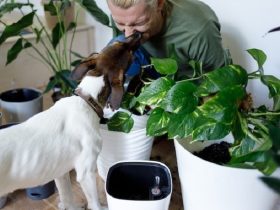There are few things more important than a good night’s sleep. After all, it’s when we’re well-rested that we feel most prepared to tackle our day.
A duvet and duvet cover is an important part of the equation when it comes to getting a good night’s sleep. Choosing a quality duvet cover can transform your sleep experience.
First, what exactly is a duvet and a duvet cover?
If you ask your average American about a duvet it will probably earn you a quizzical look, at the very least. It’s safe to say that comforters, and not duvets, are popular in the United States.
The first use of duvets has been traced back to 4th century China. Their popularity in Europe picked up during the 17th and 18th centuries, and now they continue to be used in many countries today. Duvets consist of a quilted sac, or bag, filled with feathers or a synthetic stuffing.
The difference between a comforter and a duvet is that a duvet often uses a duvet cover that can be removed, while with a comforter, everything is sewn together and nothing is removable. A duvet cover is essentially a sheet-like sac that envelopes the duvet.
Benefits of using a duvet
The fact that a duvet is paired with a duvet cover means that it has some benefits over your standard comforter.
- A duvet cover is machine washable. A duvet cover can be removed from the duvet, so it can be easily washed separately from the more bulky duvet insert.
- A duvet cover is easily replaceable. If the fabric of a comforter is ruined, then unfortunately, that’s something you’re stuck with, unless you want to shell out money to purchase a whole new comforter. If you stain or damage a duvet cover, then usually only the cover itself will have to be replaced.
- A duvet cover can be cost-effective. The machine washability of duvet covers means you don’t have to spend money lugging a bulky comforter to the dry cleaners, or the laundromat to use their bigger-sized washing machines.
How to choose a duvet cover?
Ensuring that we have bedding that meets the challenge of giving us a good night’s sleep should not be underestimated. Here are some things to consider when you are choosing a quality duvet cover for your bed:
- Size. Do you have the appropriate-sized duvet cover? The duvet cover has to fit snugly over the duvet, so you must size the duvet cover right. An ill-fitting duvet cover will either not leave enough space for the duvet, or leave so much space that it can easily twist and get bunched up inside the cover. Duvet covers typically come in single, full, queen, king, and “oversized” king sizes.
- The design. Your bedroom is your sanctuary. It’s the place you retreat to to unwind and get recentered. As such, the ambiance you create with the decor of your bedroom is important. Your bed is the focal point of your room, so the design of your duvet cover must fit your room’s aesthetic. The good news? There are literally countless colors and designs to choose from.
- The thread count. I remember it was in the nineties when thread count started to become a “thing” when it came to bed linens. The higher the thread count, the higher quality the bedding, was how it was advertised back then. I feel like that belief has survived even until today.
Thread count, by the way, refers to how many vertical and horizontal threads are interwoven in one square inch of a piece of fabric. A higher thread count supposedly makes the bedding softer and more comfortable.
Recently, the importance of thread count has been questioned, since you can have a lower thread count in one type of fabric, but it can still be more comfortable than another fabric with a higher thread count. It largely depends on the type of fabric being used.
In general, if you are buying your standard cotton duvet cover, then you want a thread count of between 200-400 for softer, more cosy sheets.
- Fabric choice is important. An ideal sleeping experience would be one of absolute comfort- i.e. a balance of textures as well as temperature. We’ve already discussed the importance of the duvet’s thread count on the feel of the duvet, but did you know that your choice of fabric can affect the temperature control of your sleep experience as well?
We all know what it’s like to toss and turn at night because we’re too hot, or to curl up into a ball shivering because we’re too cold. This is why it’s important to pick a breathable fabric that helps you maintain your body temperature.
For this, natural fabrics like cotton, bamboo, linen, or silk are the way to go.
A cotton blend with shorter fibers and a lower thread count is breathable and probably lower priced than other options, but it does not offer the same feel and durability as a duvet cover with longer staple fibers and a higher thread count made with Supima, jersey, or Egyptian cotton.
Bamboo is a fabric that is gaining popularity for its soft feel and naturally hypoallergenic properties, ideal for people with sensitive skin.
Linen is breathable and durable. The feel of linen is also softer over time after more washes.
Polyester blends are easy to clean and more stain resistant than the more natural blends, but it’s also less breathable and retains more heat than the natural fabrics.
Duvet tog is a scale that measures the amount of warmth that a duvet provides. On a scale of 1- 15, the higher the tog, the warmer the duvet. Consider the tog rating when purchasing your duvet cover. A duvet that’s mid-high on the tog scale, like, say, a 7.5, would become pretty hot if paired with a duvet cover that tends to retain more heat.
- Price. The price of your duvet cover is something you will need to take into consideration, unless your budget is among the ranks of Oprah Winfrey or Jeff Bezos! The prices of duvet covers can vary widely based on their size and material, but it can be a pricey investment. Keep in mind that a high-quality, durable duvet cover may cost more money upfront, but will be more cost-effective in the long run because it can last longer than cheaper duvet covers.
- The weave. The weave of a fabric refers to how the threads of the fabric are interwoven. The type of weave can determine the feel (smooth vs. rough), thickness, and durability of the fabric.
The basic weaves for duvet covers include percale, twill, and sateen.
Sateen is a dense weave that is wrinkle-resistant and smooth to the touch. Its fine feel and durability tend to make it more expensive than percale, but less expensive than silk.
Percale is a standard 1:1 weave that is breathable, crisp, and lightweight. This weave would be a good fit for those who tend to sleep hot.
Twill is a durable weave that is more resistant to wear and tear because of its uneven surface. Make twill more breathable by using a bamboo fabric or Egyptian cotton.
- Closures. Duvet covers have several basic types of enclosures: buttons, zippers, clips and ties. Which one is better?
If you’re looking for ease, then a zipper enclosure would be the obvious option. In a matter of seconds, you can close your duvet cover, and to boot, there’s no worry about buttons or ties popping open in the middle of the night.
On the other hand, zippers do get jammed, and a stubborn zipper snag can sometimes mean a new duvet cover is needed as a replacement.
Who knew that there were so many things to consider when choosing a duvet cover? Sizing, fabric choices, weaving, closures, and design are all important things to consider before you set off to find your new duvet cover. A quality duvet cover- and a good night’s sleep- is within your reach now that you know what to look for!











Leave a Review